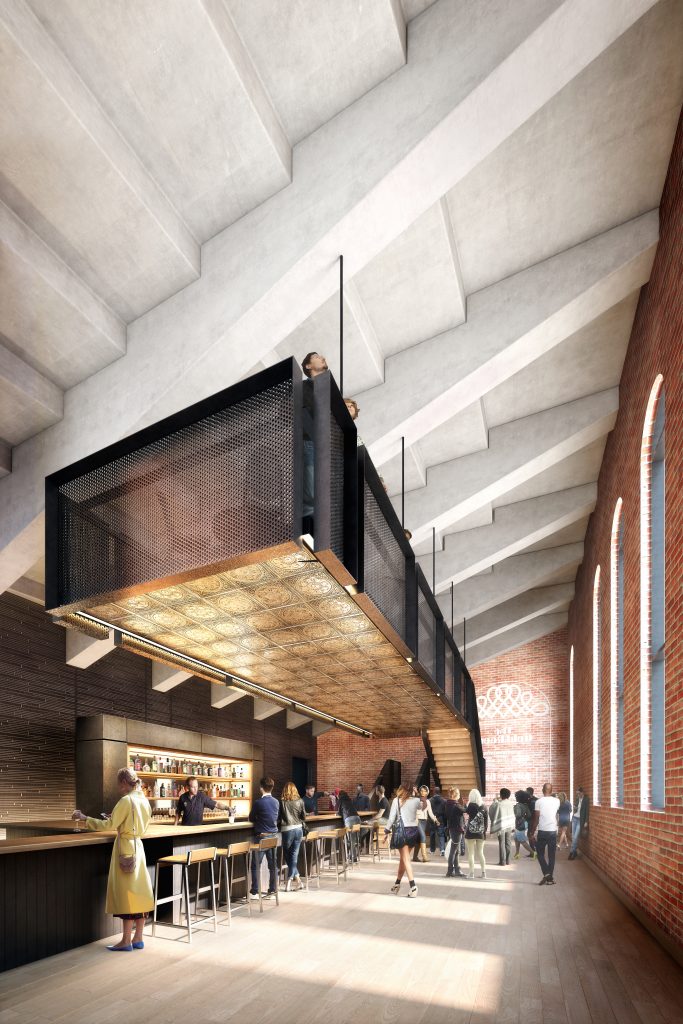The cinema, in its experiential glory can be a magical event. It provides a means to communicate in a rich contextual way with others. One should remember that the movies can be a communal experience. The release of a new film in some cases can be a real social and historical event, and it would be a shame to lose that in a world of Netflix and Amazon Prime.

Current plans for the $10 million renovation will include a bar and restaurant inside, a balcony view of Prospect Park, and an elevator to the top floor.
[pullquote]
in 2017 park slope and the surrounding community will enjoy its own nitehawk cinema outpost.
[/pullquote]Battle won, the neighborhood will still have a movie theater with a wide variety of films showing on its seven screens later this year. It is a victory for the cinema which has faced dire times in recent times and a constantly changing entertainment landscape. It is also a victory for the neighborhood and movie fans for whom seeing films on the big screen are memorable and impressionable experiences. Going to the movies can still be enjoyed locally by Park Slope families.
The theater has come a long way since its beginnings as the Sanders and will reopen just short of its 90th birthday. Back in 1928 it had only one screen and showed only silent films. Some of the famous titles of that time, some still popular, included The General, Metropolis, and City Lights. The Pavilion Theater was even there for the historic ushering in of “the Talkies” where audiences could experience sync sound for the first time.
Despite its historical significance, the Pavilion had obviously become run down throughout the decades. There was vandalism and dwindling maintenance given to spills, litter, and wear and tear. Occasionally the seats were damaged. The theaters did not always have lights, and it was unpredictable whether there would be coming attractions or not. Faithful regulars, though, appreciated occasional bargains and the added convenience of not taking a train out of the neighborhood to watch a new movie.
Nitehawk founder and owner Matthew Viragh was happy to step in and expand his Williamsburg success to Park Slope and said the timing was right to enter into a long-term lease with the new owners of the building. Renovations have been contracted to Brooklyn-based Think Architecture, who plans on preserving the iconic, historic exterior while adding some much-needed updates. The new theater’s appearance will still harken the grand old days of movie-going, but with the renovation underway it should also have the new movie technology modern patrons expect.
The new Nitehawk will offer a dine-in experience and also serve alcohol, just like the Williamsburg location, as the theater successfully led the push to overturn a liquor ban in theaters and became the first dine-in theater to open in New York State in 2011.
“The size of the venue will also allow for quality hollywood blockbuster first-run films as well as independent films. As always, we’ll be very judicious in what we choose,” said Viragh.
The big question is whether Nitehawk will be able to fill enough of its new 650-seat venue despite the current downward trend of ticket sales nationwide. At the now-closed Pavilion one could catch a matinee for $9 compared to the $15 one has to pay in the afternoon in Manhattan. Other Brooklyn theaters — like the Kent Theater on Coney Island Avenue — also offer bargain shows and bargain days and could serve as alternatives for the Pavillion’s former following.
Afterall, to its faithful regulars, the Pavilion was a boon even if the experience at the theater could be described as a little “divey”. Although it was a little nerve racking to watch an action adventure film with only a few other people — the emptiness of the theater making one feel isolated — some of the new chairs could be very relaxing. Personal experiences there have even been described as “peculiar, but magnificent.”
Strange to say, but the last days of the Pavilion might be missed, especially by the low-budget crowd. A fancy new theater might be safer and neater, but not everybody will be able to afford it. Given the theater’s history and location, there is likely to be some pushback from families who must shell out a fair bit of cash now for the new 3D and IMAX action features. Still, while taking someone to see a film there definitely won’t be “five bucking it” for the night — but it won’t be a terribly expensive date either, considering pricier date-night options in the city. The new addition of alcohol might also be a draw for some.
In the end, The Flick by Annie Baker could be an entertaining commentary on the fate of the Pavillion, as it tells the daily drama of the staff in a fictional Massachusetts movie theater challenged by the new entertainment landscape. The staff in the play was up to some of the same things that people see in the films on the big screen. (Incidentally, the play won The Pulitzer for Drama in 2014 with its characters dealing with the change to digital filmmaking.)
An upscale new theater in the neighborhood might provide a more sanitized and safer experience, but, will it attract new people? With inflation and the cheap availability of streaming services, some might not opt to make it to the big screen anymore. In 1928 a film cost only a quarter which adjusted for inflation was about $4, no less.
Film is something that is shared among people; it is something that people can have in common. It is also a way to see things through the eyes of others. Those who don’t take in a story from the “eyes” or in the “shoes” of others can miss the opportunity to expand their awareness and understanding of the world they live in. One will soon be able to do this again first without leaving the neighborhood.
